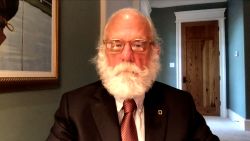Jeffrey Epstein’s death was an abrupt end to a life marked by wealth, power and years of sex crime allegations.
But the multimillionaire’s apparent suicide in a New York federal jail has spurred questions and myths about his death and the future of legal cases against him.
Here’s what we know about Epstein’s final days, and what will happen now.
Why was he recently in jail?
Last month, federal prosecutors in New York unsealed an indictment that accused Epstein of paying girls as young as 14 to have sex with him at his Upper East Side home and at his estate in Palm Beach, Florida, between 2002 and 2005.
Epstein faced similar accusations in Florida back in 2007, but signed a plea deal with prosecutors allowing him to avoid federal charges and plead guilty to lesser state prostitution charges.
As he faced new charges, Epstein asked a judge last month to grant him bail and allow him to stay under house arrest in his Upper East Side mansion – one of the biggest private homes in Manhattan.
But the judge refused, and Epstein was held at the Metropolitan Correctional Center starting in July.
Was Epstein on suicide watch when he died?
No. Epstein was temporarily placed on a suicide watch after he was found in his jail cell July 23 with marks on his neck, a law enforcement source and a source familiar with the incident told CNN at the time.
It wasn’t clear whether those injuries, which were not serious, were self-inflicted or the result of an assault, the sources said. Epstein told authorities he had been beaten up and called a child predator, they said.
After conducting daily psychological assessments, psychologists with the Bureau of Prisons took him off suicide watch at the end of July, according to a source familiar with the matter.
Should he have stayed on suicide watch?
Suicide watch usually lasts just one or two days, said Jack Donson, a former correctional treatment specialist for the Federal Bureau of Prisons.
“I’ve never seen in my entire career a suicide watch lasting more than a week,” Donson said. “So the context of him committing suicide while on watch, that’s just a fallacy.”
Donson said a suicide watch means an inmate is being monitored by a staff member 24 hours a day – “three shifts of overtime people.”
He said resources are limited, and overtime can be costly.
“I was probably being paid $500, $600 for a shift of overtime just to watch somebody through a window,” Donson said.
If an inmate doesn’t appear to be a threat to himself during suicide watch, he’s removed from constant monitoring.
But Democrats and Republicans alike wonder whether Epstein’s suicide could have been prevented.
“It’s ridiculous that he was taken off suicide watch,” said former New York Mayor Rudy Giuliani, who is now an attorney for President Donald Trump.
Democratic presidential candidates such as Sens. Kirsten Gillibrand and Elizabeth Warren say they want investigations. And Sen. Ben Cardin said he wants the results of the investigation to be made public.
“It’s very hard to understand how he was not on a suicide watch,” Cardin said.
Are there conspiracy theories behind Epstein’s death?
Yes, but so far they’re largely unfounded.
This much we know: Epstein was found unresponsive in his cell around 6:30 a.m. Saturday, the Federal Bureau of Prisons said.
Staff members tried to revive him, but Epstein was later pronounced dead at a local hospital.
The bureau said Epstein’s death was an “apparent suicide,” and authorities believe Epstein hanged himself, a law enforcement source said.
The New York City medical examiner’s office hasn’t released the official manner of death.
But Trump shared a tweet and video from conservative comedian Terrence Williams that claimed – without evidence – that former President Bill Clinton and former Secretary of State Hillary Clinton were responsible for Epstein’s death.
The tweet also incorrectly claimed that Epstein died while on suicide watch.
What will happen to legal cases against Epstein?
The federal criminal case against Epstein is over. But on the civil side, plaintiffs can still sue Epstein’s estate, CNN legal analyst Paul Callan said.
The exact amount of Epstein’s wealth has not been publicized. Even prosecutors have said they haven’t been able to determine the scope of his assets. But Epstein was, at a minimum, a multimillionaire.
The financier owned properties in Manhattan, Palm Beach, New Mexico and Paris, as well as a private island in the Caribbean, according to court filings. He owned at least 15 vehicles and a private jet.
One civil lawsuit is expected to be filed by a woman who alleges Epstein raped her when she was 15.
The accuser in that pending lawsuit, Jennifer Araoz, said Saturday that she is “angry Jeffrey Epstein won’t have to face his survivors of his abuse in court.”
“We have to live with the scars of his actions for the rest of our lives, while he will never face the consequences of the crimes he committed the pain and trauma he caused so many people,” she said in a prepared statement.
What could happen to some of Epstein’s associates?
Prosecutors could pursue related criminal cases involving Epstein’s associates or employees.
Though Epstein was the only person charged in the indictment unsealed in July, the court papers described three unnamed employees who scheduled his alleged victims to provide “massages” that escalated to sexual acts and paid victims hundreds of dollars in cash.
For example, one person referred to in the indictment as “Employee-1” called girls who had previously been lured into encounters with Epstein to arrange future visits to his New York home.
Robbie Kaplan, an attorney for one of the alleged victims in the criminal case, said “the many victims of Jeffrey Epstein and his accomplices should not lose hope.
“We will continue to fight tirelessly on their behalf not only to seek justice, but also to ensure that all of the facts of his monstrous crimes become known to the world,” she said.
“We need to expose the whole truth here so that crimes of this scale and scope never happen to any young girls (or boys) ever again.”
CNN’s Shimon Prokupecz, Laine Mackey, Erica Orden, Jason Hanna, Ray Sanchez and Jeremy Diamond contributed to this report.

























